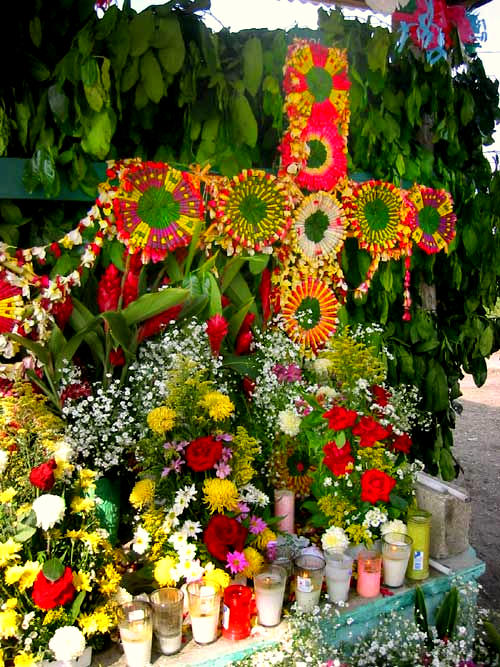Excerpts from Jim Conrad's
Naturalist Newsletter
from the April 28, 2008 Newsletter written in the community of 28 de Junio, in the Central Valley 8 kms west of Pujiltic, elev. ~700m (2300ft), ~N16.331°, ~W92.472°; southeastern Chiapas state, MÉXICO
FRANGIPANIS
A common but spectacularly flowering small tree gracing many yards and streets in this area is the fragrantly blossomed Frangipani, genus PLUMERIA, flowers shown emerging from thick, fleshy branches shown below:
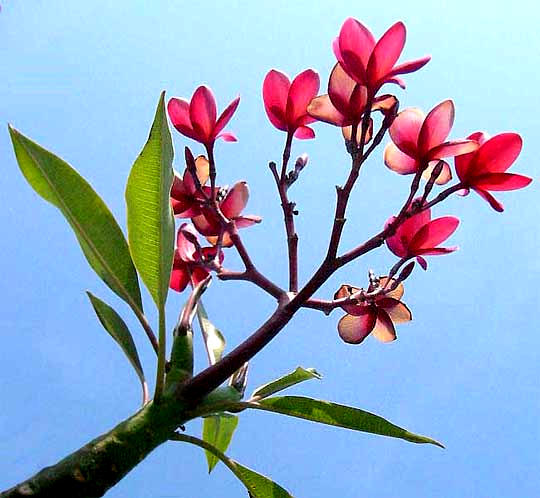
Several frangipani species are found in the wild from Mexico and the West Indies to northern South America. Some species produce several flower-color variations. One variety especially favored in this area bears white flowers with yellow centers.
Late this week a celebration began that will end on May 3rd, when believers will climb Yalem Chem Hill above Venustiano Carranza and pray for rain. At 28 de Junio's little church they adorned the blue, wooden cross with garlands of frangipani blossoms of the white-with-yellow-center kind, as shown below:
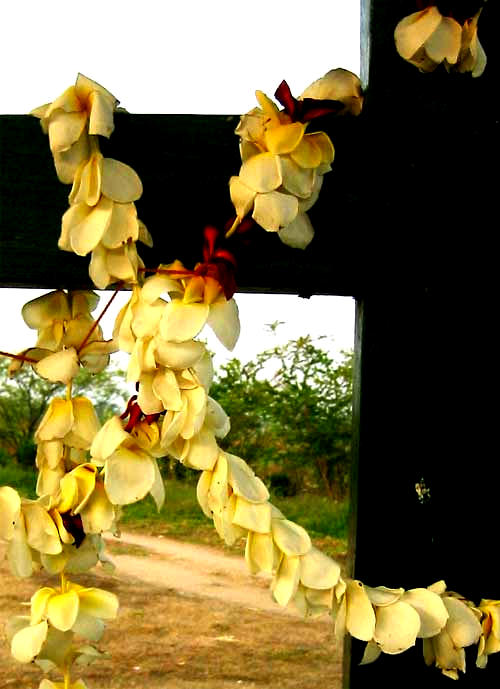
Frangipanis are members of the Dogbane Family, the Apocynaceae, in which we also find mandevillas, oleanders and periwinkles. Plants in that family typically exude milky sap when wounded, and that's the case with frangipanis which "bleed" white latex copiously. Plantas Medicinales de Mexico reports that the white sap has been used to cure wounds and venereal diseases and to deal with tooth problems, but warns that it makes a "drastic and dangerous purgative."
from the May 5, 2008 Newsletter written in the community of 28 de Junio, in the Central Valley 8 kms west of Pujiltic, Chiapas, MÉXICO
CEREMONIAL USES OF FRANGIPANI FLOWERS
This Friday morning, even before the sun rose above the eastern ridge, when I descended from sleeping in the reserve I found women tending big, bubbling caldrons of boiling water where sweetcorn in the shuck was being boiled, and later headless chickens and turkeys would be dumped, to make plucking their feathers easier. After jogging and fixing breakfast I returned to the church to find the powerfully sweet fragrance of frangipani flowers emanating through the door. Inside I saw the colorful scene you can see below:
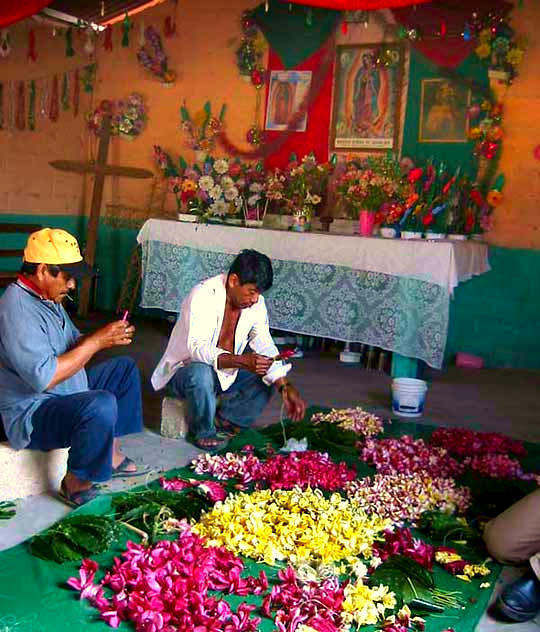
In that picture, below the altar presided over by a large picture of the Virgin of Guadalupe, men sit before piles of Frangipani flowers of various colors very carefully constructing floral "wheels" that later will adorn the Cross. The men had picked the flowers from trees around their "city homes" in Venustiano Carranza.
A partially finished "wheel" can be seen below:
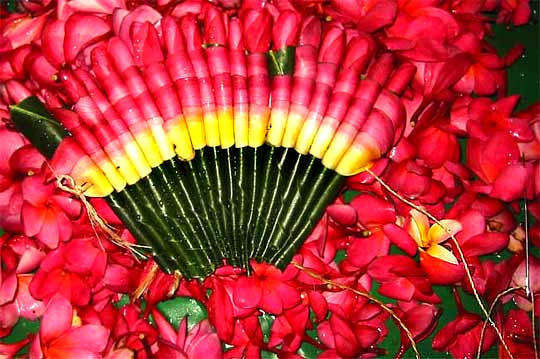
Each ray of the "wheel" consists of several Frangipani flowers rolled a certain way, and chosen for the color needed in that particular spot. Several times I saw all work stop as the men discussed which flower of the thousands before them was best for the particular section of the particular ray of the particular "wheel" someone happened to be working on. All day the men worked as if time were nothing. All important was that every detail of every piece of work be done as perfectly as possible.
While men worked with the flowers, outside women prepared a genuine feast for later. I thought of offering my help with the flowers but seeing how the division of labor was so strict I feared my offer might be out of place. I was wrong. Don Andrés walked up to me, handed me a big needle and thread, a bucketful of Frangipani flowers, and showed me where I could sit stringing floral ropes. I took my place and an observer managed to get a photo of that, shown below:
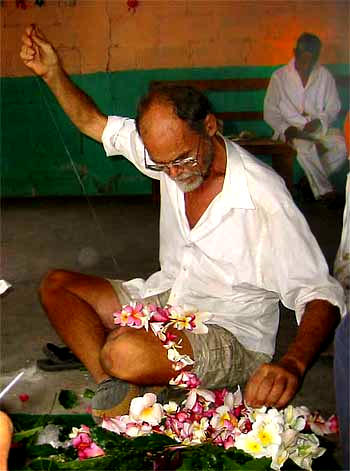
In that photo, behind me an old man sits twisting seasoned fiber extracted from local agave plants into twine used to hold the "wheels" and other things together.
You can see the finished altar, finished "wheels" and ropes of Frangipani flowers adorning their Cross, below:
